For more than 30 years, Southern Nevada water officials had a simple plan to fuel the valley’s explosive growth: pump groundwater from rural valleys in eastern Nevada to Las Vegas.
The water would make a 300-mile trip from arid basins in rural Nevada through a pipeline to Las Vegas. But for three decades, a group of odd bedfellows that included rural ranchers, environmentalists, Native American tribes and even the Church of Jesus Christ of Latter-day Saints fought the project at every turn — before a judge finally dealt it a fatal blow in March 2020.
To its opponents, the pipeline was a looming threat that would have devastated ranching communities, high desert ecosystems, Native American sacred sites and more.
But for Southern Nevada, the pipeline was a key backup plan should Lake Mead ever start to dry up — something once talked about as only a remote possibility decades down the line, but which now stands as a reality staring the Southwest square in the face. Conditions along the Colorado River have deteriorated far more rapidly than predicted, with eroding hydrology, climate change and chronic overuse all taking a toll during a two-decades-long drought.
“The question wasn’t going to be ‘Can we afford it?’” Pat Mulroy, the former longtime head of the Southern Nevada Water Authority and key driver behind the project’s push, said of the pipeline. “The question was going to be ‘Can we afford not to?’”
The Colorado River supplies roughly 90 percent of Southern Nevada’s water. The plan to pump water hundreds of miles from the Spring, Cave, Dry Lake and Delamar valleys was supposed to make Las Vegas less reliant on the Colorado as the city continued to grow, and at one time was expected to supply at least 170,000 homes with water in Las Vegas, at an estimated cost of $15 billion.
The surface of Lake Mead now stands at 1,045 feet in elevation — some 170 feet lower than where the reservoir’s surface sat at the start of 2000 — and it is projected to drop another 30 feet by September 2024. Should the lake drop to 950 feet elevation, Hoover Dam would no longer be able to generate hydropower.
A few hundred miles up the Colorado River, that risk of losing hydropower generation is coming faster than any one expected. The latest projections from the Bureau of Reclamation show Lake Powell’s levels could fall below the level needed to generate hydropower at Glen Canyon Dam as early as November 2023.
The threat of Powell reaching that level is a 10 percent probability, according to the latest projections from the Bureau of Reclamation, but it is “one we need to be taking very seriously, and there are far worse scenarios,” said John Entsminger, general manager of the Southern Nevada Water Authority, during a meeting this month. Should that happen, Entsminger said the federal government would almost certainly be forced to bolster Powell by holding back water that would normally be released downstream to Lake Mead — a scenario that already played out earlier this year.
The federal government this year has tasked states that rely upon the Colorado River to cut uses from the river by as much as 30 percent, starting next year. For Southern Nevada, the pending pinch raises questions about the future of the region’s water supply, and what happens if the mighty river that supplies water to nearly 40 million Americans continues to dwindle.
The outlook was clear to Mulroy in the early days of the drought, though. The water levels at Lake Mead and Lake Powell started what would be their two-decades long fall in the early 2000s, and Mulroy knew that climate change would progressively worsen that decline as the years went on.
The authority at one point applied for the rights to pump as much as 180,000 acre-feet of water per year from those valleys to Las Vegas — what would have been a significant addition to Nevada’s annual 300,000 acre-foot allocation from the Colorado River.
Mulroy said the project to pump billions of gallons of water from the eastern edge of the state to its most populated urban hub was planned “for conditions like they exist today.”
“If the day came where Mead was going to go completely dead, then we would have a backup water supply,” Mulory said in an interview.
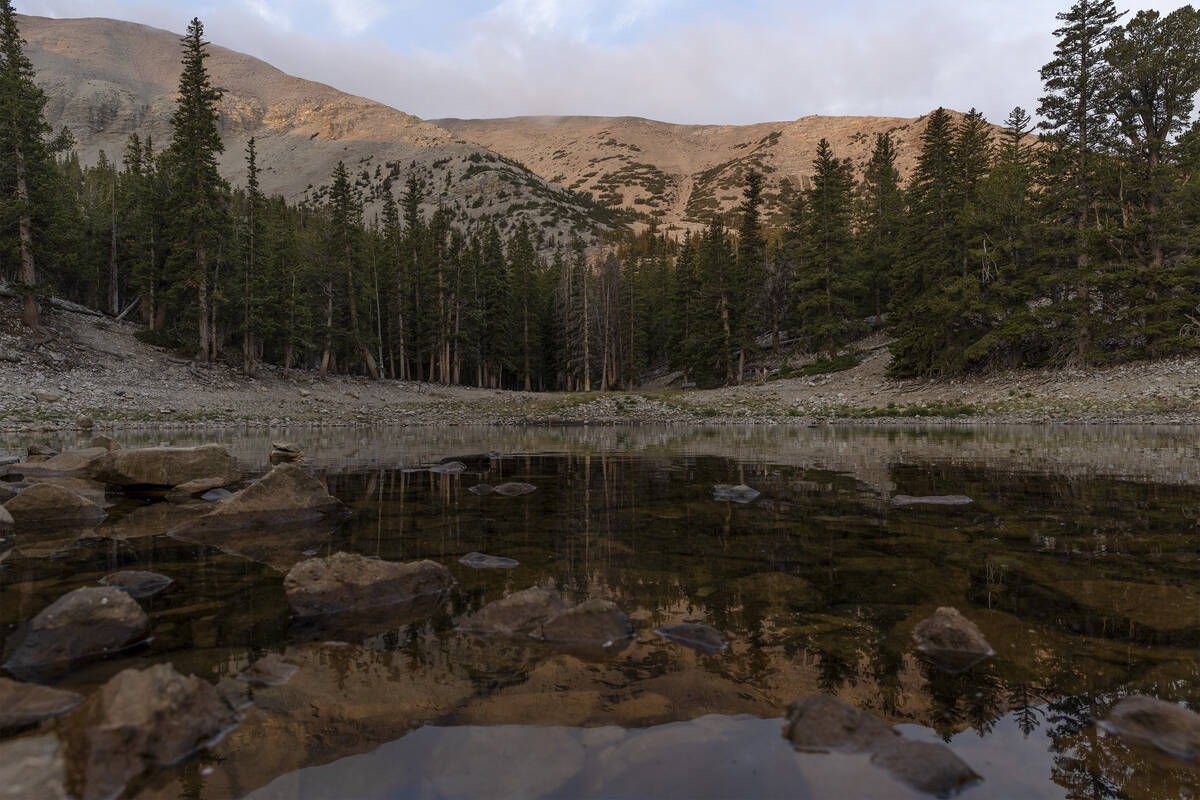
Environmental concerns
That water would come at a significant cost to the environment, Senior District Court Judge Robert Estes ruled in the 2020 decision that proved to be the death knell to the pipeline.
Estes said that the authority’s plan would have pumped more water out of those groundwater basins than would naturally return to the system, and eventually result in the depletion of the underground aquifer — an argument that ranchers like Tom Baker and his family had been making to the authority for decades.
The pipeline would have turned the already arid Snake Valley into a dust bowl, Baker told the Review-Journal last month, drying up not only those groundwater basins, but also natural springs they produce across the region that farmers and ranchers rely upon in a region where agriculture is woven into the fabric of life for so many.
“It’s a value judgment whether you think … the natural resources that are here are worth maintaining or if you just take all the water from these areas and dry ‘em up and create more subdivisions in Las Vegas,” Baker said, standing next to one of the natural springs burbling up to the surface outside of one of his family’s ranches outside of Garrison, Utah. “And I know they need houses in Vegas and growth is important, but there’s a lot of value to this area and the natural environment to everybody in Vegas and everybody in the country.”
Concerns were also raised about what pumping groundwater from those valleys would do to Great Basin National Park, with one former superintendent of the park saying in 2011 that the project threatened the alpine streams and lakes that the park is known for, as well the sweeping views of the surrounding landscape.
To the Western Shoshone, a grove of trees that had deep roots in the tribe’s history would also have been threatened by the pipeline.


Rancher Tom Baker describes the importance of keeping groundwater allocation as it is for his land and animals on Friday, Sept. 9, 2022, in Garrison, Utah. Baker’s ranch spans from the border of Nevada into Utah and produces beef cattle. His irrigation system would no longer work if the surrounding springs and groundwater basins were depleted by the now-defunct Vegas Pipeline, which would have spanned 300-miles from northeastern Nevada to Las Vegas. (Ellen Schmidt/Las Vegas Review-Journal) @ellenschmidttt
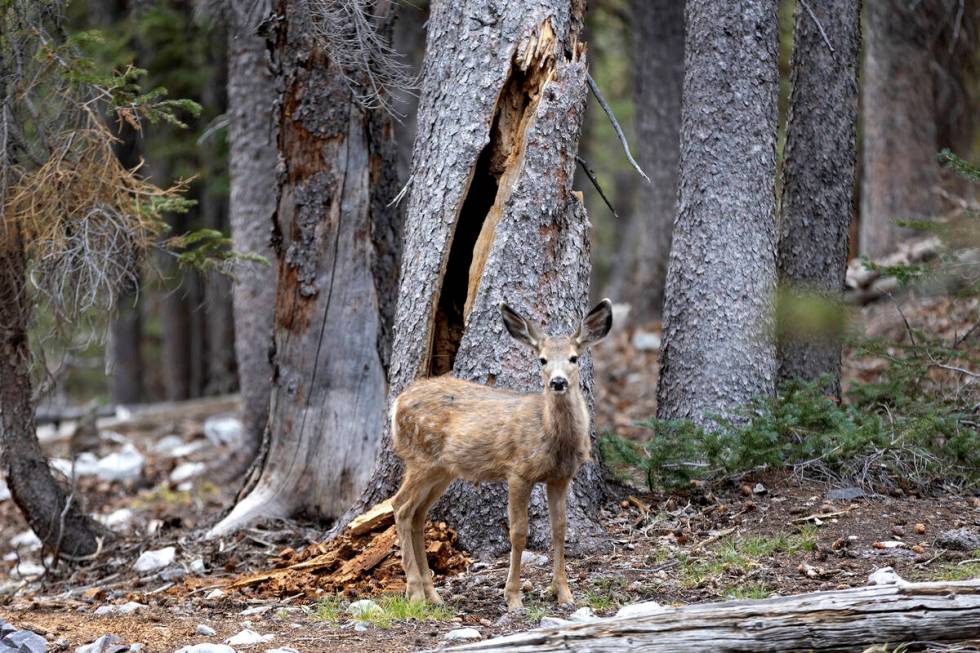
In Spring Valley, just west of Great Basin National Park, that includes a group of Rocky Mountain juniper trees known as swamp cedars that are growing at an elevation thousands of feet below where they are typically found. It’s a mystery to many as to how those trees got to the valley and how they continue to thrive away from their usual habitat.
Bahsahwahbee, or “The Sacred Water Valley,” is a sacred site which once served as the traditional meeting place for indigenous people across the Great Basin to gather for prayer and celebration among the tribes.
But the site has a darker history. The valley was the site of a series of three 19th century massacres — two carried out by the military and another by a group of local vigilantes.
To the Shoshone people, the souls of their murdered ancestors still live inside the trees.
“There were no burials,” said Delaine Spilsbury, an Ely Shoshone tribal elder. Spilsbury says that her grandmother was one of two young girls who survived the third massacre in 1897 because they were away from the camp. “And so we believe that their souls and their everything that’s about them is contained by these beautiful rocky mountain junipers.”
The trees themselves have a shallow root system, and there was concern that any pumping in the surrounding valley could significantly drop the level of the local groundwater aquifers, leaving the trees without the nutrients needed to survive.
In 2017 Bahsahwahbee received a Traditional Cultural Property designation, and last year the state Legislature passed a pair of measures to further protect the area.
The first made it illegal for anyone to cut or destroy the trees without a special state permit.
The second urged Congress to declare the swamp cedars a national monument or to extend the boundaries of Great Basin National Park, a move that would make future groundwater projects in the area far more complicated.
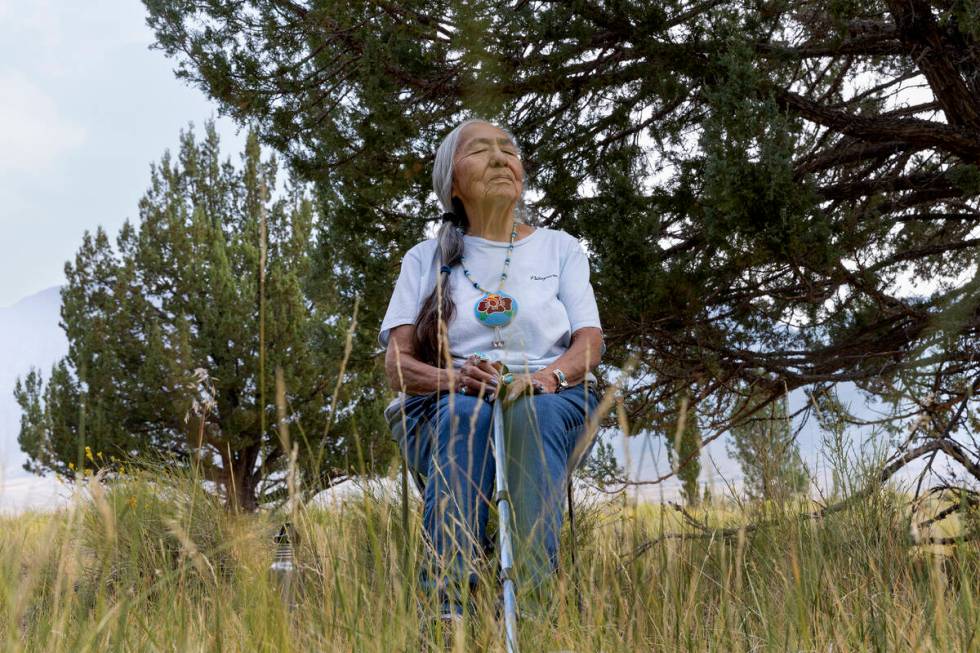
All that’s left: conservation
Without the pipeline, conservation is now the only arrow in the Southern Nevada’s water quiver, Mulroy said.
The region has already taken substantial steps to conserve water in the last two decades, reducing use by 26 percent since 2000 while the valley’s population grew by roughly 800,000 people. The water authority says there is still plenty of room to continue down that path. In 2021, Southern Nevadans used 110 gallons per person per day, and the authority has plans to reduce that to 86 gallons per person per day by 2035. Some of the measures needed to get there are already in play, including a legislatively-approved ban on using Colorado River water to irrigate nonfunctional turf by 2027, new penalties targeting the highest water uses in the valley and limiting new turf installations, among others.
Southern Nevada will be able to pull water from near the bottom of Lake Mead thanks to a new pumping station finished in 2020, one that will allow the authority to pump water from reservoir even if it falls to “dead pool,” the point in which Hoover Dam could no longer release water downstream.
If the seven states that rely on the river can meet the federal government’s call to meaningfully change how the water is used and stabilize the river system — and with it Lake Mead — Mulroy says Southern Nevada could sustain itself on its current supplies that depend so heavily on the Colorado for the foreseeable future.
Stabilizing the river won’t be easy by any measure and will require significant behavior changes throughout the basin, especially on farms in California and Arizona, but she’s confident those solutions will be found in time to preserve the water levels and hydropower generating abilities at Hoover and Glen Canyon dams.
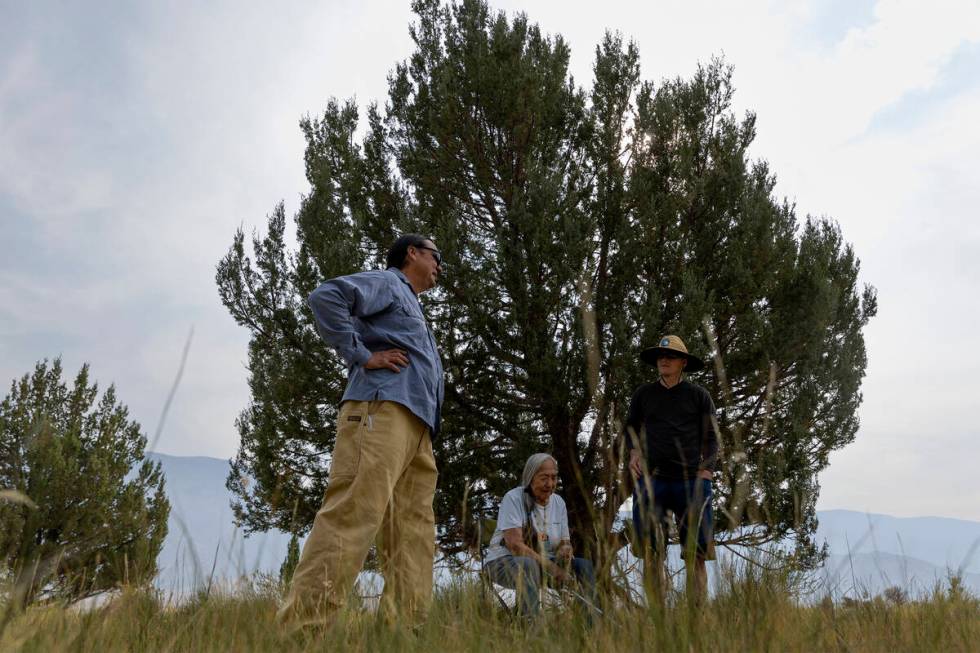
 An attendee of a gathering to celebrate the end of the Vegas Pipeline squeezes Delaine Spilsbury's shoulders on Friday, Sept. 9, 2022, in Baker, Nevada. Spilsbury, an Ely Shoshone tribal elder, has been part of the 30-year fight against the pipeline from the beginning. (Ellen Schmidt/Las Vegas Review-Journal) @ellenschmidttt
An attendee of a gathering to celebrate the end of the Vegas Pipeline squeezes Delaine Spilsbury's shoulders on Friday, Sept. 9, 2022, in Baker, Nevada. Spilsbury, an Ely Shoshone tribal elder, has been part of the 30-year fight against the pipeline from the beginning. (Ellen Schmidt/Las Vegas Review-Journal) @ellenschmidttt  Those who helped stop the Vegas Pipeline gather to celebrate the end of the 300-mile pipeline that would have spanned from White Pine County to Las Vegas on Friday, Sept. 9, 2022, in Baker, Nevada. (Ellen Schmidt/Las Vegas Review-Journal) @ellenschmidttt
Those who helped stop the Vegas Pipeline gather to celebrate the end of the 300-mile pipeline that would have spanned from White Pine County to Las Vegas on Friday, Sept. 9, 2022, in Baker, Nevada. (Ellen Schmidt/Las Vegas Review-Journal) @ellenschmidttt At some point the region as a whole won’t be able to conserve its way out of the water crisis and will need to look to other places to get water, she said. Desalination will play a key role in that future, as will the Salton Sea in Southern California.
Mulroy sees a future where communities that currently use Colorado River water instead use desalinated ocean water, including both urban and agricultural areas. That could also include pumping raw ocean water into the Salton Sea, stabilizing it and building an inland desalination plant that could then send water to bigger agriculture regions like the Imperial Irrigation District, which would in turn leave the Colorado River Water they would normally use behind in Lake Mead.
Nevada’s role in those projects would likely be more financial — something the water authority is already doing. The authority announced last year that it would contribute as much as $750 million to help build a massive water recycling project in partnership with the Metropolitan Water District of Southern California. In exchange, the Southern Nevada Water Authority would be able to get another 25,000 to 30,000 acre-feet of Colorado River water annually, about an additional 10 percent.
“Is it expensive? Yeah,” Mulroy said of those types of projects. “But so it costs billions. How much do we pay for a hotel? Two, three billion?”
For Southern Nevada, Mulroy thinks those long-term plans should still include groundwater projects, too, including the eastern Nevada pipeline. But she doubts the political will to pursue such projects exists.
“They’d be foolish to give up the water rights,” she said. “That resource may one day be invaluable.”
Kyle Roerink, executive director of the Great Basin Water Network, which was formed in 2005 out of the coalition fighting the pipeline,said he believes the water authority’s current management regime when they say they have no plans to pursue that project and are focused entirely on conservation efforts. What happens after Entsminger eventually retires, though, remains to be seen.
And so long as the authority holds onto those eastern Nevada water rights, concerns about the future of those valleys will remain.
“I don’t think the SNWA is maintaining their robust alfalfa operations because they like beef and dairy,” he said.
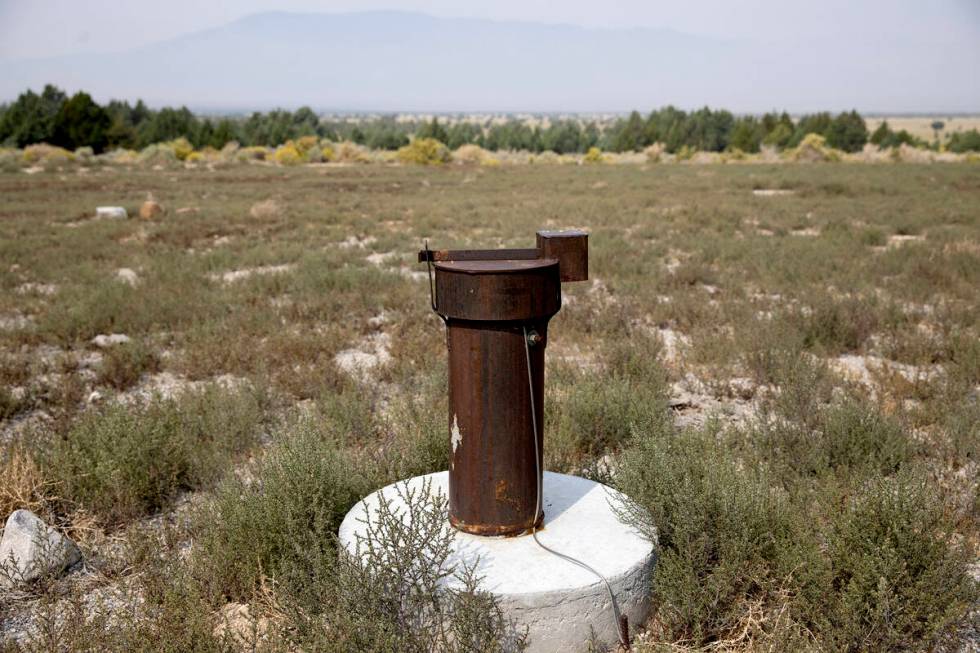
Celebrating end of pipeline
For now, that water and the flora and fauna that flourish because of it are safe.
The Southern Nevada Water Authority’s board formally abandoned the controversial pipeline project in May of 2020, some 31 years after Mulroy first submitted documents to pursue the rural water rights.
The authority declined requests for interviews for this story.
With the pipeline’s fate sealed in the early throes of the pandemic, the coalition of ranchers, environmentalists, rural governments and Native American communities that for decades had fought tooth and nail against the project would have to wait to celebrate the pipeline’s death together
Instead, that celebration would come during a warm, sunny weekend last month in Baker — the tiny town along the Nevada-Utah border that served as a sort of epicenter for the pipeline resistance.
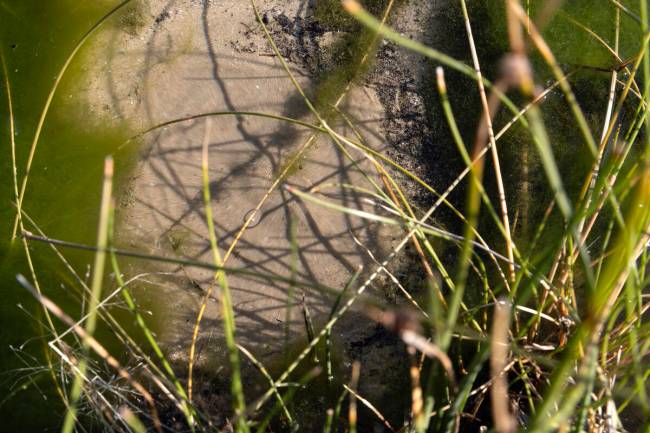
Abigail Johnson, a founding member of the Great Basin Water Network, remembers Mulroy’s tenacity in her pursuit of the project, and how it brought that odd pairing of pipeline opponents closer during the 30-year fight.
“It’s really a lifetime accomplishment,” Johnson said.
The excitement over the coalition’s victory, even more than two years after the fact, was palpable as they gathered once again to commemorate the success that followed three decades of court fights.
They recounted tales of the early days of the fight and how the patchwork group of protestors eventually formed into a cohesive coalition that would go on to fend off one of the most powerful entities in all of Nevada.
Even with the victory in the courts and the authority saying the project is off the books, the celebration was one that carried with it a hint of caution in the high desert air.
In trying to establish legal rights to pump the groundwater and pipe it to Las Vegas, the authority rapidly bought up seven ranches in Spring Valley in the 2000s. While the water authority says the pipeline project is no longer part of its long-term plans, it still owns and manages those ranches — and the water rights that came with them, too.
“It’s never over,” Johnson said.
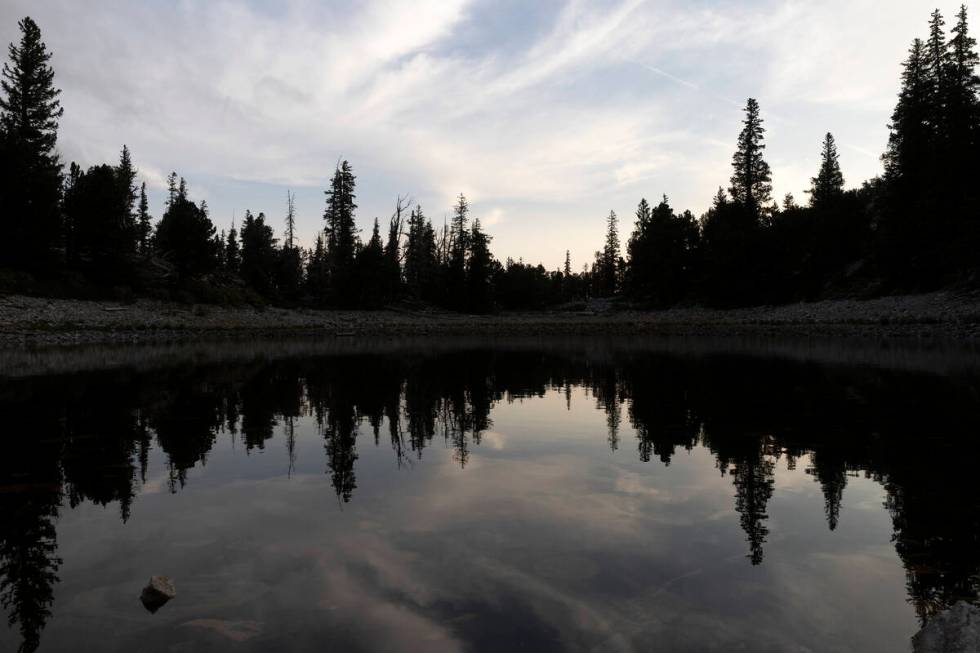
Contact Colton Lochhead at clochhead@reviewjournal.com. Follow @ColtonLochhead on Twitter.














